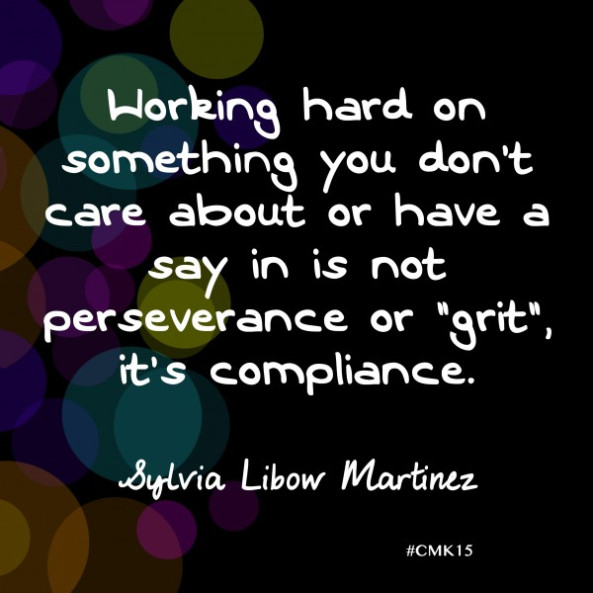Here’s a quick thought experiment. Take a look at this article, “Reverse engineering for 3D Printing: Replicate, Replace & Improve Real Parts!” If you are using a 3D printer in a school, you may be on the lookout for practical articles that help explain how to tease the most learning out of your new cool technology. The article goes through five steps for taking apart a real world object to create a CAD design to make a 3D printed copy.
But I know for many teachers who don’t have an engineering background, “reverse engineering” doesn’t mean a whole lot, and about halfway through the article, there’s a picture of the CAD model that’s simply going to freak people out. It’s pretty clear that it was written for people with a lot of CAD design and 3D printing experience under their belt. If you are teaching elementary or middle school, it’s easy to just think “there’s nothing here for me.”
But this article has gems of wisdom in it – it’s worth trying to puzzle them out and think through the parts that anyone at any grade level can try.
Reverse engineering isn’t scary – it’s a term used to mean to take something apart and see how it works. Once you see how it works, you can make it yourself. For a 3D print, this means physical objects, perhaps with mechanical parts. Once it’s apart, you can figure out how to design the pieces, make them yourself, and hopefully, if you did a good job, you can make the object wholly out of your own parts. And yes, you can reverse engineer non-physical things like code, or non-mechanical things like electronic circuits, and the principal is the same. Break it down, figure it out, make it your own.
So let’s do a close reading and see what gems we can find. You might say we can reverse engineer this article! Let’s break their steps down:
1. Get Your Tools Ready
The tools recommended in this article are pretty universal. Paper, pencil, and measuring devices. For some ages, a tape measure and ruler will work fine. Graph paper is useful, but not necessary if your products aren’t going to be that precise. A step up in complexity is to use a caliper, a more precise measuring tool that is really useful for complex shapes. A caliper grabs the object (or spans an interior space) that you are measuring and you can read the measurement directly.
If you have other devices like laser measuring tools or a scanner, you need to evaluate whether or not they will be useful. You know your kids, so it’s your call whether your students are ready to use them. If the scanner is TOO good, you will simply see students scan things in and skip the breakdown and understanding steps.
As an aside, here’s a small problem with this article – the item they’ve chosen to break down and recreate is a brake caliper, like those found in cars. However, here’s the problem – one of the primary tools they are explaining is also called a caliper*. If you are reading the article and not really familiar with either kind of caliper, it could be where you simply stop reading.
But I think it brings up an interesting point – why did they choose a brake caliper? So here is where I would add a Step Zero – Choose your items to reverse engineer wisely.
It’s not just about avoiding confusing terms. A brake caliper is a nice product to break down. Why?
- A brake caliper is mechanically interesting, and can be taken apart with hand tools. You want those “goldilocks” objects – not too hard and not too easy. Not too many parts, but enough to cause some head scratching. This may be a matter of trial and error, because in CAD design, sometimes seemingly simple things can be very complex. A flat cube is easy. A die is not.
- The most important parts of a brake caliper are easy to see and the mechanical interactions are out in the open (once the case is off). You can poke it with your fingers and see it move. Objects where the internal parts and actions can’t be seen without completely taking it apart to the point that it no longer works, or objects that rely on electronics that can’t be modeled with 3D shapes aren’t as interesting.
- The brake caliper has a few layers, but the parts mostly lay flat without a lot of tricky 3D jigsawing.
- It’s not all just straight lines, but the curved parts aren’t too complex. If there are curves that need to be modeled, you need to be sure that the CAD program you use can actually model those kinds of shapes.
So the brake caliper is not a beginner CAD project – the number of parts, multiple layers, and the modeling required takes it up a notch. These are not hard and fast rules, and in every grade level there will be a wide range of abilities.
2. Plan For Your Design & Print
The article does a good job laying out steps that will scale to almost any age student if you can generalize them. But this step is primarily a step for the teacher to think through and do some trial runs (maybe with some peer student leaders).
- What features are the most important to be printed?
- Can you simplify shapes?
- What do you need to do to get the best print, such as orienting the model, designing supports, rafts, struts, etc.
- How precise do you need to be?
- What will the scale be?
Precision is a crucial topic at this stage. Precision is a sometimes overlooked engineering concept that can actually help you decide what level of detail is needed in your model. Precision is precious — it costs time (and sometimes money) to make precise measurements and manufacture precise parts. Do think carefully about what precision is needed, and the math behind that. Your printer will also force some of these decisions, as you may find that your printer simply cannot print as precisely as you had hoped. If you have a model with measurements like .000002 mm, your software may happily oblige, but your printer will just laugh at you. Tolerances vary from printer to printer, and melted filament always sort of oozes in unexpected ways, so find this out before you assign students to model something that is beyond the capability of your printer or a real stretch mathematically (a little stretch is always good)!
Scale is another concept that is simple on the surface, but can result in interesting tradeoffs. For example when you make an object bigger, EVERYTHING about the object becomes bigger, including gaps and mistakes. So choosing an object that has pieces that need to fit tightly together, or fit with precision (like a hinge, gear, or snap fitting), requires more precision than a simple, single object. If you are scaling something down to make it smaller, you may run into tolerance issues where your printer simply can’t make it work. But if you don’t need precision, it’s not worth worrying about. Nobody was ever harmed by the giant paper mâché pack of gum being off by an inch or two.
3. Disassemble and Study – Understanding
This is where the fun begins. Everybody gets to take an object apart. Provide the right tools, paper, and art supplies (to make visual notes and observations) and a place to lay everything out. Students will have different styles – there will be methodical ones vs. the exploders – let them mess around with the objects and make sure there are enough backups if things get broken past the point of being able to continue to measure the parts. Provide a place to keep the parts — once the CAD starts, it often helps to go back to the original object for another (or three or ten) more looks. Sometimes you don’t know what to look at until you start work and you make connections or have questions that didn’t occur to you originally. This is part of the iterative process. Give it time.
One resource to help students learn to think carefully about the parts, purposes, and complexities of everyday objects is the Agency by Design resource called, you guessed it – Parts, Purposes, and Complexities. (All Agency by Design educator resources here.)
4. Start Your CAD Work
If you read the article I pointed to at the beginning of this post and got to step 4, you saw these images. If it made you want to run for the hills, you aren’t alone. This looks complicated, but really, it’s just shapes! Everyone starts from a beginner level and builds up. Building design skills, including reading diagrams like this, are all part of a gradual process. Trust your problem solving skills enough to know that if what you are looking at is too complicated, it’s not a threat, it’s an invitation to a future where it will make sense.



Reading these kinds of articles is helpful for the process you can extract and try in your classroom. If the particulars of a project look daunting, just skip those details for the time being. You’ll get there.
Selecting and understanding your CAD software is a big step. At younger ages, Tinkercad is always a popular choice. But like any easy to use tool, it has limitations that will eventually show up as designs get more complex. There is no “one right answer.” Try some different ones before you get locked into any one app. Read The Invent To Learn Guide to 3D Printing: Recipes for Success for suggestions. This is again a super time to use a small group of students who want to help. Let them try out different software packages and “sell” you the best one. And remember, there may be more than one choice for different students, different age ranges, and different design objectives.
With student work, try to pick the right time to move from paper and pencil to CAD. At some point, the CAD program is going to be more helpful with the design details than paper and pencil. Making students complete the whole design on paper is really a waste of time, since once they go to CAD it’s likely to change anyway.
It’s always good to have people in the room who understand how CAD design will translate to 3D printing. These skills are largely won by trial and error. The most important part of this role is that they don’t tell students exactly what to do. Don’t forget that this may include the students themselves or near peers! Spread the expertise around.
Your big picture objective at this stage is to keep the projects moving forward — bumpy roads are OK, but not driving off a cliff.
In our book, Invent To Learn: Making, Tinkering, and Engineering in the Classroom, we introduce the idea of “mouth up, mouth down frustration.” Kids should have experiences that challenge them and propel them forward. They should be gleefully leaping over hurdles, or maybe digging under them or walking around them. The smile and victory dance when a hurdle is overcome is the “mouth up” part. The other kind of frustration, mouth down, is not part of the learning process. You don’t have to “help” kids towards a predictable catastrophic failure, like setting them up with tools that are too difficult to use, or objects that are simply too complicated to model. Having one or two kids occasionally struggle through to the end is not proof that it is the right path for all kids.
5. Choose Your Filament
Here’s an example of some really good advice in this article that you might overlook because you don’t have a choice of filament. But the bigger lesson to learn here is to think about what you will do with the models you make. Do they actually have to work or are they for display? Will students use them for other classes, continue to refine the model, or do you need them for another purpose? It might change your choices on how sturdy to make the piece or how hard you work to make a precise scale model.
You may not have objects that need parts with different rigidity, as discussed in this example, but at some point, you will likely have the PLA vs ABS discussion, and these material properties are part of the decision-making process.
* Why are they both called calipers? Just like a measuring caliper grabs the object being measured, a brake caliper grabs the rotor, which is attached to a wheel, slowing the car down.
. At the time, Maurice was the first African-American International Grandmaster and had written a book about teaching chess. He worked with young people in Brooklyn, taking them to national championships. He also “called” chess games for ESPN, using a telestrator like John Madden. I went to New York to meet him and watch him work. I sat on the floor of the TV booth for six hours, fascinated at his mastery of the game and the power of his language. This was no dusty, boring exercise – he brought it alive with words that conjured images of galloping knights, brooding, sneaky bishops, and sweaty game-day warriors grinding out a victory with their sacrifices for the common goal.
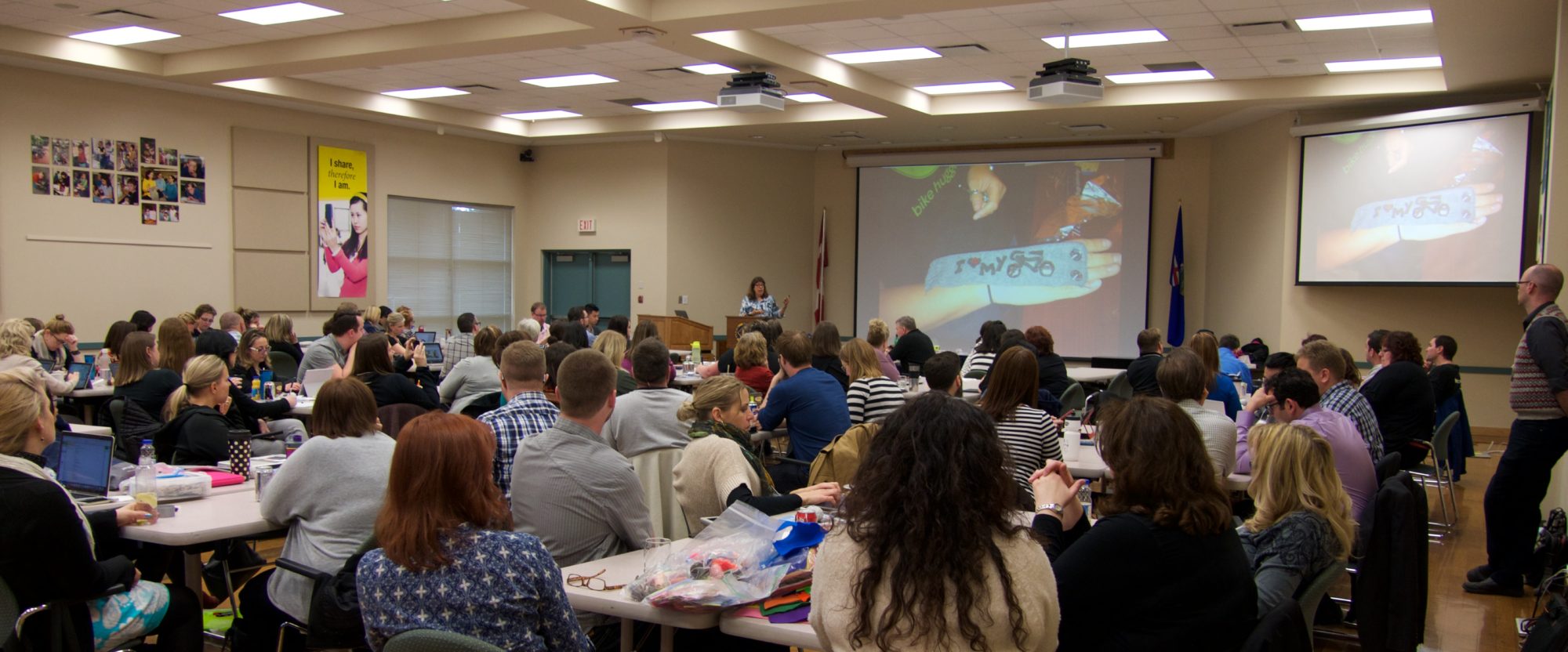






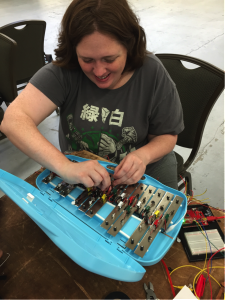
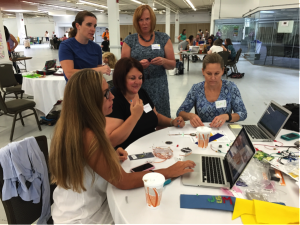 Can you tell who the expert is?
Can you tell who the expert is?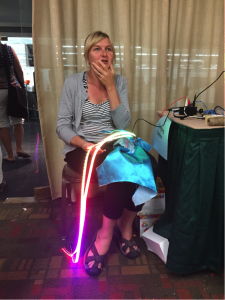 Making fashion that lights up
Making fashion that lights up
 Anyone who is thinking about “making in education” has likely bought (or at least thought about) a 3D printer for their makerspace or classroom. In our book,
Anyone who is thinking about “making in education” has likely bought (or at least thought about) a 3D printer for their makerspace or classroom. In our book, 